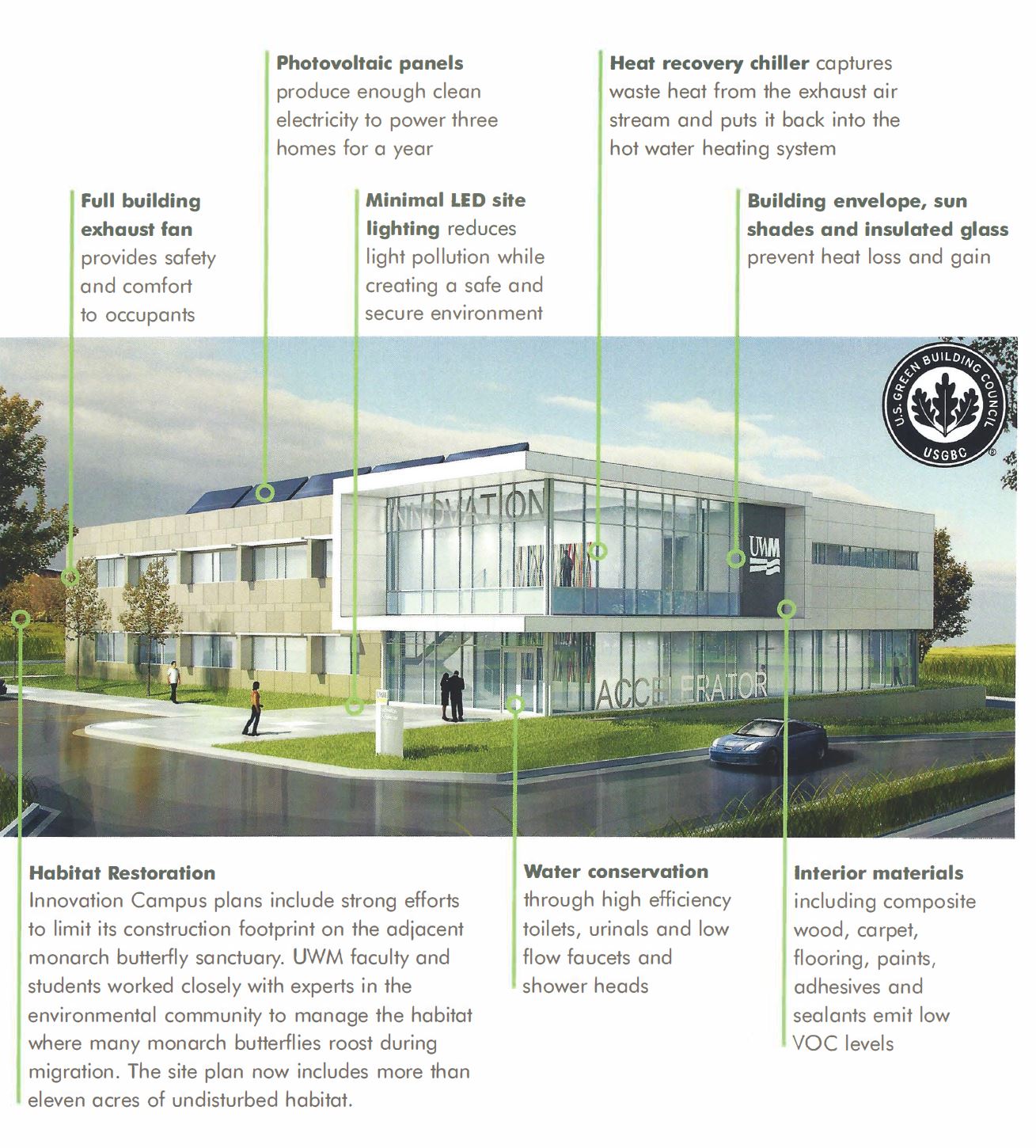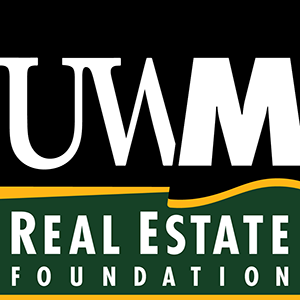Incubator Space | Innovation Campus | Wauwatosa, WI
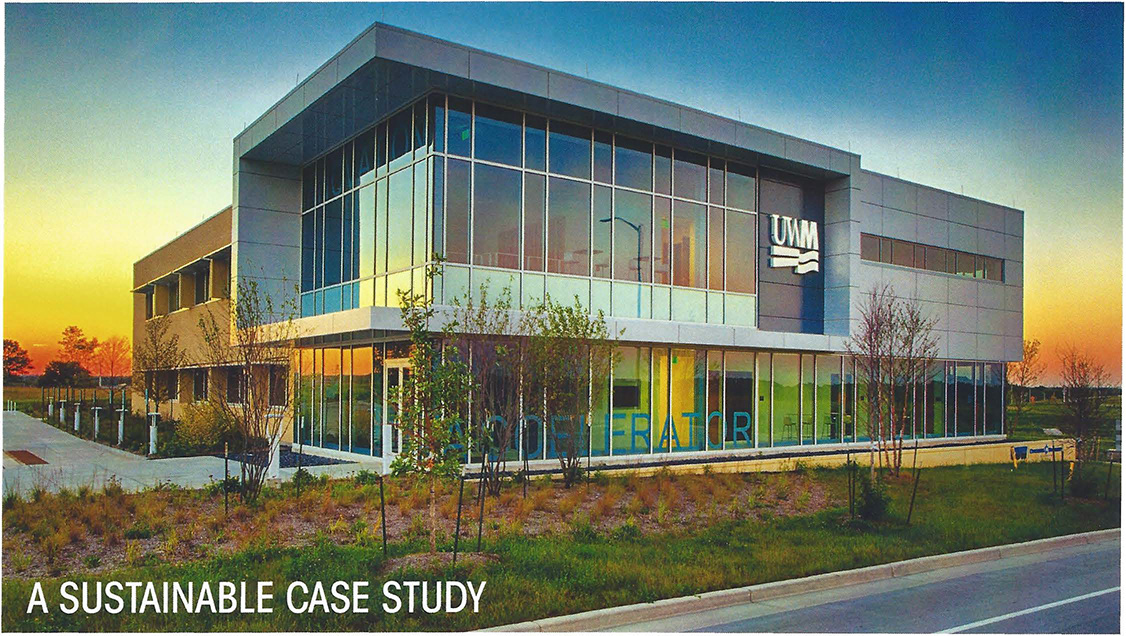

Bringing Research and Industry Together
In 2011, the Economic Development Administration, part of the U.S. Department of Commerce, awarded a grant to the City of Wauwatosa and the University of Wisconsin-Milwaukee Real Estate Foundation to construct the first building on Innovation Campus – the University of WisconsinMilwaukee (UWM) Innovation Accelerator. This building was conceived as a place where business and industry meets academic research to launch intellectual property for the new century.
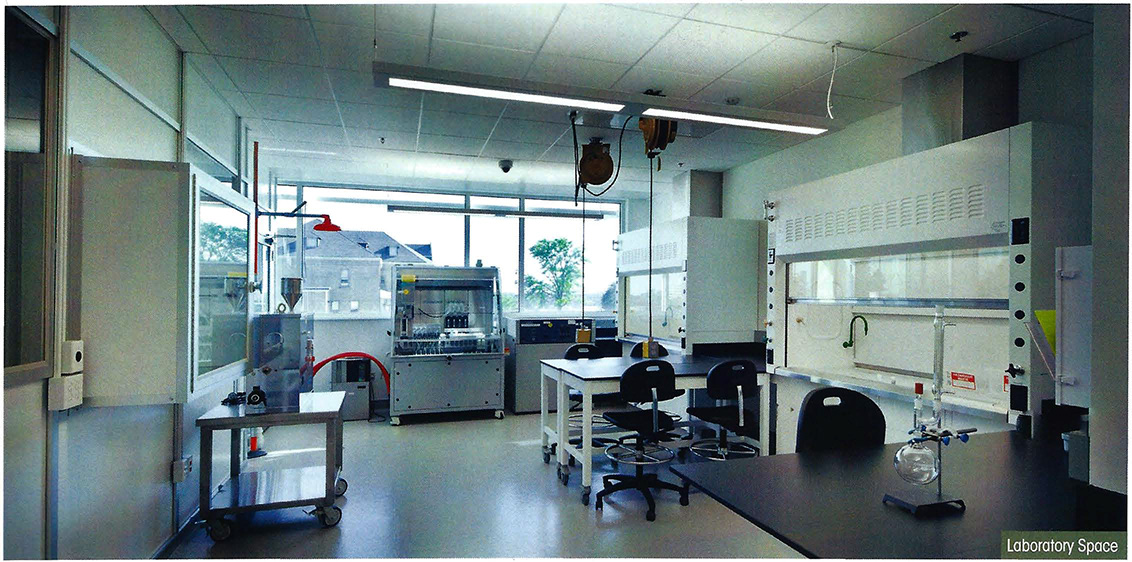

SUSTAINABLE DESIGN
In addition to creating synergies among research and business partners through design, the UWM Real Estate Foundation set out to establish a sustainable benchmark for the new research park. As the first building constructed within, the Innovation Accelerator features a long list of sustainable attributes.
Site Development
- Stormwater management reduces runoff and erosion by capturing and filtering stormwater before it is released back into the ground water system.
- An extensive green roof tray system captures stormwater and provides a habitat for local insects and birds.
Transportation
- Bicycle racks and a shower/changing room encourages employees to bike to work.
- Preferred parking stalls reserved for low emitting/fuel efficient vehicles and those who carpool.
82%
construction waste recycled or diverted from landfills
31%
less water usage than a typical office
21%
less energy usage than typical laboratories
30,000 kWH
produced per year by photovoltaic array, enough to power three homes for a year
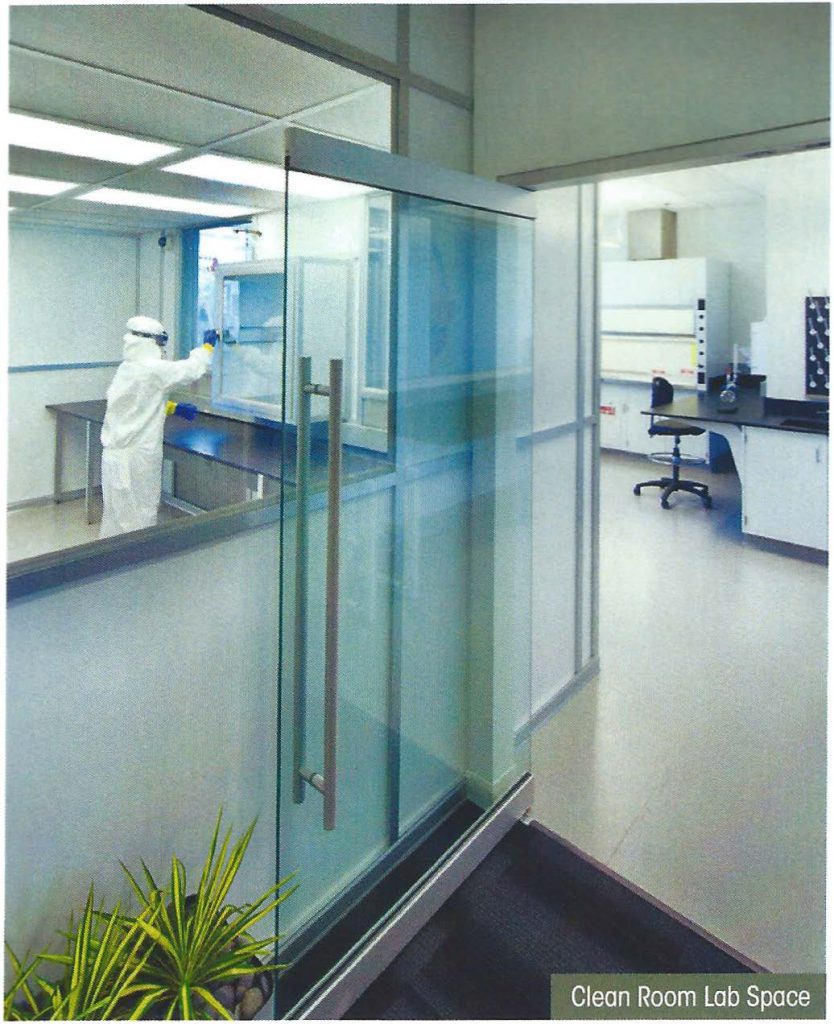

Energy Conservation
- High efficiency condensing domestic hot water heaters and boilers with variable speed drives intelligently save energy.
- Energy recovery units, variable frequency drives, evaporative cooling, adiabatic evaporative humidifiers and innovative laboratory exhaust fan systems are utilized creatively to maximize performance and m1nim1ze energy use.
- Zero use of CFC-based refrigerants in all heating, ventilating, air conditioning and refrigeration equipment. The refrigerants used in the equipment were chosen for their low emissions of compounds that contribute to ozone depletion and global climate change.
- Additional power needs are fulfilled by green power purchased from the local utility.
Comfort and Health
- A green cleaning policy is enacted to protect the building occupants and janitorial staff from exposure to harmful chemicals commonly used in cleaning products.
23%
of materials came from sources within 500 miles of the project
24%
of materials contain high levels of recycled content
55%
of new wood is FSC certified


Systems Working in Tandem
A sustainable project is more than simply a collection of green features. It begins with a team approach to identify sustainable feature synergies – both passive and active – to create a network of systems independent from one another but working together for greater impact.
